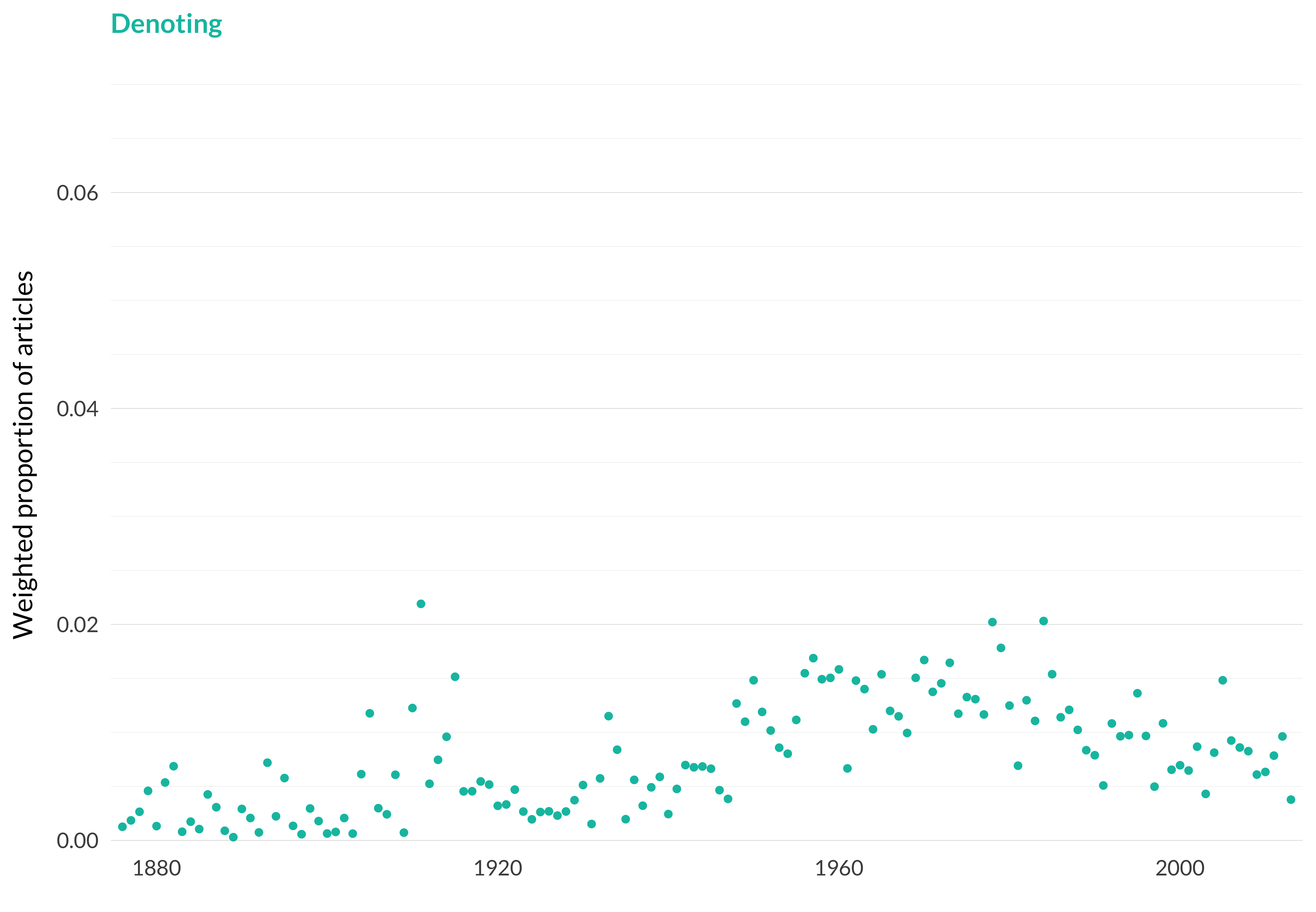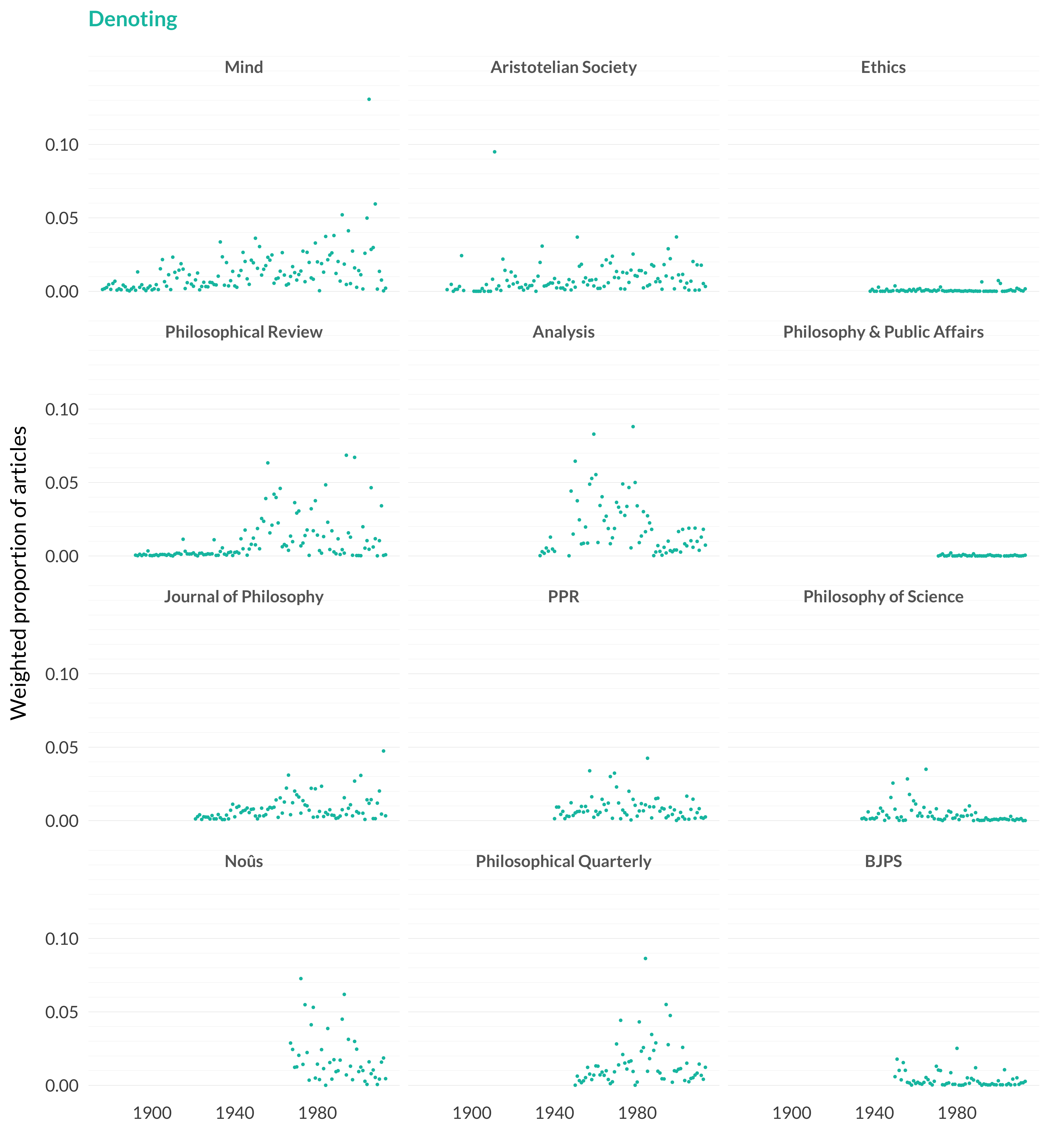2.43 Denoting
Category: Philosophy of Language
Keywords: denoting, frege, russell, meinong, denotation, geach, names, acquaintance, name, denotes, france, denote, fregean, king, star
Number of Articles: 389
Percentage of Total: 1.2%
Rank: 34th
Weighted Number of Articles: 317.3
Percentage of Total: 1%
Rank: 45th
Mean Publication Year: 1976.7
Weighted Mean Publication Year: 1973
Median Publication Year: 1977
Modal Publication Year: 1978
Topic with Most Overlap: Ordinary Language (0.0445)
Topic this Overlaps Most With: Sense and Reference (0.0414)
Topic with Least Overlap: Medical Ethics and Freud (0.00019)
Topic this Overlaps Least With: Liberal Democracy (0.00022)

Figure 2.104: Denoting.

Figure 2.105: Denoting articles in each journal.
Comments
It’s basically “On Denoting”.
Mind reprinted “On Denoting” for its one hundredth anniversary, and the model provides slightly different probabilities for it. Partially this is because this is a nondeterministic model, and partially it’s because there was a little bit of editorial introduction that made it into the 2005 text.
Some of the papers in here are best thought of as history papers. This is one of the challenges with these topics from early analytic work. We’re covering such a long range that we include papers that were not at all history papers, like say “On Denoting”, as well as historical work on those papers. But I think it makes much more sense to call this a history topic.
“On Denoting” is one of the most important papers in the history of analytic philosophy, so it makes sense that it would be a topic of its own, that its importance would be recognized immediately, and that it would lead the citation counts. Except only the first of those three things is true.
A bit of attention paid to it in 1911 and 1912—there is an important exchange between Russell and Emily Elizabeth Constance Jones—but then it is basically invisible from the start of World War I to the end of World War II. This pattern—Russell writes a super important paper but it only gets proper attention decades later—will repeat itself a bit, though this is the paradigm case.
And I was a little surprised at which papers are cited more often than “On Denoting”. According to Google, at least, “What Is It Like to Be a Bat?” has twice its citations. “What Is It Like to Be a Bat?” is an important paper too, but still this was a bit of a shock.